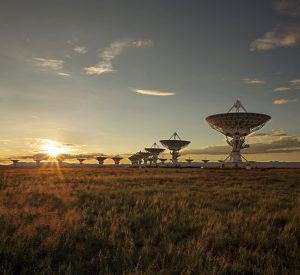 This Industry Viewpoint was authored by Dan Rhodes, Director of Business Development at designer and manufacturer of RF-to-mmWave components and subsystems, Filtronic.
This Industry Viewpoint was authored by Dan Rhodes, Director of Business Development at designer and manufacturer of RF-to-mmWave components and subsystems, Filtronic.
~ Pioneering space communication with terrestrial know-how ~
Bridging the terrestrial and non-terrestrial worlds is not merely a matter of applying existing technologies to a new canvas. While both environments share fundamental principles of communication and rely on robust components such as transmitters, receivers, filters and amplifiers, the shift upwards introduces a unique set of challenges and demands.
On Earth, networks operate within the relatively familiar confines of our atmosphere, where distance limitations are measured in kilometres and power requirements are readily met. But as we venture beyond the horizon, the equation changes dramatically.

In space, communication distances balloon into thousands of kilometres, necessitating solutions that can punch through the void with greater power whilst also remaining energy efficient. Platforms like satellites and balloons become new transmission towers, imposing tight weight and size constraints on the equipment they carry. And the harsh reality of space adds an extra layer of complexity, with components needing to withstand the unforgiving onslaught of radiation. These factors demand a nuanced approach, where terrestrial expertise is not simply transplanted, but adapted and refined to meet the specific needs of the non-terrestrial realm.
Unifying principles
The transition from terrestrial to non-terrestrial isn’t a leap into the unknown — it’s more akin to scaling a familiar mountain from a different angle. Both terrestrial and non-terrestrial components share a reliance on similar manufacturing techniques, a factor that plays a crucial role in ensuring quality across different application environments. The core principles of component construction — precision assembly, rigorous material selection and adherence to quality control processes — remain consistent, ensuring robust performance regardless of whether the component is used in a tower or in orbit.
Similarly, the performance objectives that drive terrestrial design translate into the non-terrestrial realm. Goals such as maximising signal fidelity and minimising power consumption become increasingly critical when dealing with the unique challenges of space, especially when ensuring uninterrupted and dependable data transfer and maintaining communication integrity over vast distances.
Distinctive challenges
In the non-terrestrial domain, the weight of components becomes critically important. Satellites and high-altitude balloons — which must contend with the formidable constraints of gravity — require components that strike a delicate balance between power and minimal weight.
This imperative for lightweight, yet powerful, components has spurred significant innovation in materials science and engineering. For example, advanced composites and alloys are increasingly employed to reduce weight without compromising structural integrity or performance. Engineers also focus on optimising the design of these components to ensure they consume less power. The power efficiency not only reduces the size and weight of the power supply units, but also extends the operational lifespan of the satellites and balloons.
The move to miniaturisation is key here, where the goal is to compress the capabilities of conventional equipment into increasingly compact forms. This involves leveraging advanced materials, designing sophisticated heat dissipation mechanisms and employing innovative packaging techniques — all of which are essential in creating components that are both lightweight and highly functional.
Additionally, space presents a challenge not faced by its terrestrial counterpart — radiation. To safeguard against space radiation, engineers employ a multi-layered defence strategy that goes beyond traditional protection methods. This includes the use of specialised shielding materials designed to absorb or deflect high-energy particles.
Such materials are often lightweight yet robust, tailored to add minimal weight while providing maximum protection. In addition, the implementation of redundant circuitry is a key strategy, where multiple copies of essential components are included; if one fails due to radiation, others can take over, ensuring continued operation. Fault-tolerant designs also play a crucial role, where systems are built to detect and correct errors autonomously, allowing them to continue functioning even when some damage occurs.
Strategic partnerships
For design engineers venturing into the non-terrestrial domain, it is important to partner with a company that not only understands the importance of extensive and rigorous testing, but also possesses the capability for efficient mass production of components. Rigorous testing ensures that every component can withstand extreme conditions, including intense radiation, extreme temperatures and the vacuum of space.
This level of testing is vital for predicting and enhancing the longevity and reliability of the components in orbit. Furthermore, a company adept in mass-producing these specialised components can offer significant cost advantages. Mass production allows for economies of scale, reducing the per-unit cost of components. This efficiency is particularly crucial in the space industry, where the budget can be a limiting factor.
Bridging the gap isn’t just about replicating terrestrial solutions; it’s about adapting them with ingenuity and precision. From maximising signal fidelity across vast distances to mitigating the harsh realities of space radiation, these adaptations push the boundaries of communication while leveraging the bedrock of terrestrial know-how. As the industry continues to evolve, strategic partnerships and a focus on efficient production will be crucial for cost-effective, reliable communication, beyond the atmosphere.
For further information contact:
Fin Farrelly, Marketing Manager
Filtronic plc
Plexus 1, NETPark, Thomas Wright Way, Sedgefield, County Durham, TS21 3FD
e-mail: Fin.Farrelly@filtronic.com
Twitter: https://twitter.com/Filtronic
LinkedIn: https://www.linkedin.com/company/filtronic/
If you haven't already, please take our Reader Survey! Just 3 questions to help us better understand who is reading Telecom Ramblings so we can serve you better!
Categories: Fiber Networks · Industry Viewpoint · satellite





Discuss this Post